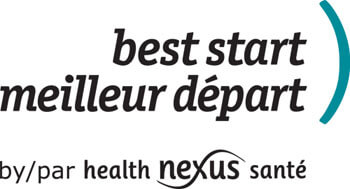Vision checklist and information
Children may not know that they have a vision problem. They can’t always tell you what they see. One out of 4 children has a significant eye or vision problem that can interfere with learning and development. The Ontario Association of Optometrists recommends that every young child has complete eye examinations at ages 6 months, 3 years and every year thereafter or as recommended by your optometrist.
Does your child have an unusual eye appearance?
- One eye that looks turned in or out?
- Bumps, styes, redness, swelling or crusting of eyelids?
- Drooping eyelid?
- Haziness or whitish appearance inside the pupil?
- Frequently watery eyes?
Does your child behave in a way that could suggest a vision problem?
- Does not watch or follow an object?
- Touches things to help recognize them?
- Does not make eye contact?
- Closes or covers one eye?
- Squints or frowns when looking far or near?
- Rubs or touches the eyes a lot?
- Blinks more than usual?
- Reacts strongly to light?
- Turns or tilts head when viewing objects?
- Holds objects very close to face?
- Dislikes near tasks?
- Loses interest quickly or becomes irritable with visual activities?
- Has poor depth perception or trouble seeing 3D?
- Trips or bumps into things often?
- Is uncoordinated in activities and sports?
Does your child have any difficulties with learning?
- Has poor posture when reading/writing?
- Has poor handwriting?
- Moves head, loses place, skips lines when reading?
- Uses more effort than normal to complete school work?
- Works hard but is not achieving the expected level at school?
Is your child at risk for vision problems?
- Does a family member have a turned or lazy or blind eye?
- Does a family member have glasses?
- Has any family member had early childhood cataracts or glaucoma?
- Were there problems with the pregnancy or delivery?
- Was your child premature at birth?
- Does your child have a hearing loss?
- Does your child have a health condition that can affect eyes, such as:
- Cerebral palsy
- Juvenile arthritis
- Down syndrome
- Autism
- Attention deficit disorder (ADHD)
- Developmental delay
The Ontario Health Insurance Plan (OHIP) covers the cost of an annual eye exam for children aged 0-19 years. To find an optometrist, you can call the Ontario Association of Optometrists at (800) 540-3837 or visit their website.
Learn more about free program for junior kindergarten students at www.EyeSeeEyeLearn.ca. |
Adapted with permission from the Ontario Association of Optometrists
Dental checklist and information
Teach your child healthy dental habits early. Below are helpful oral health tips:
- Help or supervise your child to brush his teeth twice a day
- For your child less than 3 years of age, brush his teeth.
- For your child from 3 to 6 years of age, you should help him brush his teeth.
- Talk to your dentist or dental hygienist about the best way to brush your child’s teeth.
- Floss your child’s teeth at least once a day
- Many cavities start between teeth.
- Start cleaning between your child’s teeth when the teeth are touching.
- Talk to your dentist or dental hygienist about the best way to floss your child’s teeth.
- Use a pea-sized drop of fluoridated toothpaste for your child age 3 to 6 years of age
- Fluoride helps to strengthen the tooth enamel.
- Make sure your child does not swallow the toothpaste.

- Talk to your dentist or dental hygienist about the use of toothpaste.
- Check your child’s teeth
- Look for dull white spots or lines on the teeth. These may be on the necks of the teeth next to the gums.
- Dark teeth are also a sign of tooth decay.
- Make an appointment with a dentist right away if you see these signs.
- See a dentist to treat your cavities
- Bacteria that cause cavities can be passed on to your child.
- Anything that has been in your mouth should not be put in your baby’s mouth.
- Take your child to see a dentist by 12 months of age or within 6 months of getting his first teeth
- Cavities found early can be fixed more easily and cheaply.
- Only a dentist can perform a complete dental exam, make a diagnosis of tooth decay or other dental disease and prescribe treatment options.
- Offer healthy beverages
- Make water the drink of choice.
- Offer only water between meals and snacks.
- Other healthy drinks include white (unsweetened low-fat) milk and unsweetened fortified soy beverage. Offer 2 cups (500 mL) each day.
- Avoid or limit sugary beverages such as juice, pop, iced tea, and sport drinks.
- Offer healthy snacks
- Give your child snacks that include a variety of healthy foods from Canada’s Food Guide.
- Healthy snacks should always include a vegetable or fruit. Try cheese and apples, carrot sticks and hummus, whole grain pita bread triangles and raw veggies with bean dip.
- Snacking often on sugary, sticky, and starchy snacks will contribute to erosion of the enamel.
- Keep snacks and meals 2½-3 hours apart.
- Avoid constant snacking throughout the day.

